Hydroponics is a growing technique that allows plants to grow without the need for soil, using nutrient-rich aqueous solutions that provide plants with everything they need to develop. This agricultural practice has gained popularity worldwide due to its advantages over traditional methods, especially in terms of water use efficiency, control over growth conditions, and the ability to cultivate in urban environments or areas with poor soils.
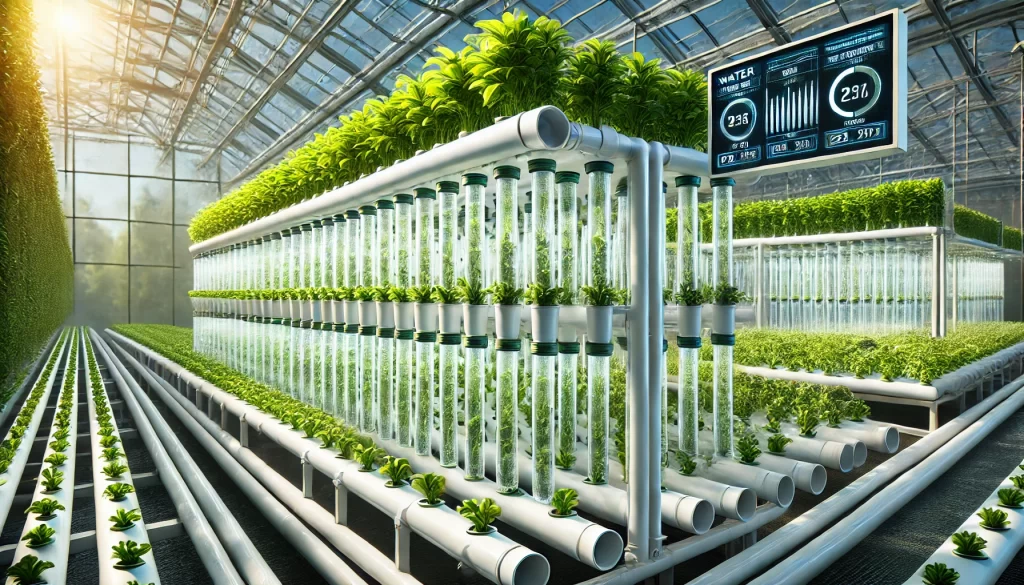
Basic Principles of Hydroponics
How Does Hydroponics Work?
In hydroponics, plants are grown in an inert medium or directly in water enriched with essential nutrients. These nutrients include macronutrients such as nitrogen, phosphorus, and potassium, as well as micronutrients like iron, magnesium, and calcium. The system is based on the roots’ ability to absorb these nutrients dissolved in water, facilitating fast and healthy plant growth.
Types of Hydroponic Systems
There are several hydroponic systems, each with specific characteristics and applications:
- Nutrient Film Technique (NFT) System: It consists of a thin stream of nutrient solution that continuously circulates through channels where the plant roots are located. It is ideal for growing leafy crops like lettuce and spinach.
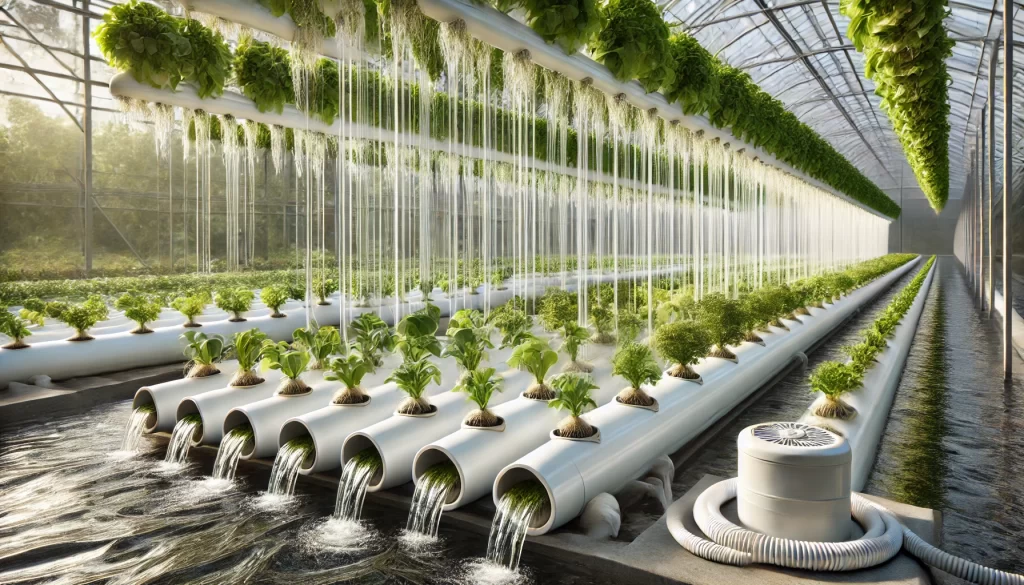
- Floating Root System: Plants are placed in a floating panel over a nutrient solution. This system is simple and efficient for growing fast-growing vegetables.
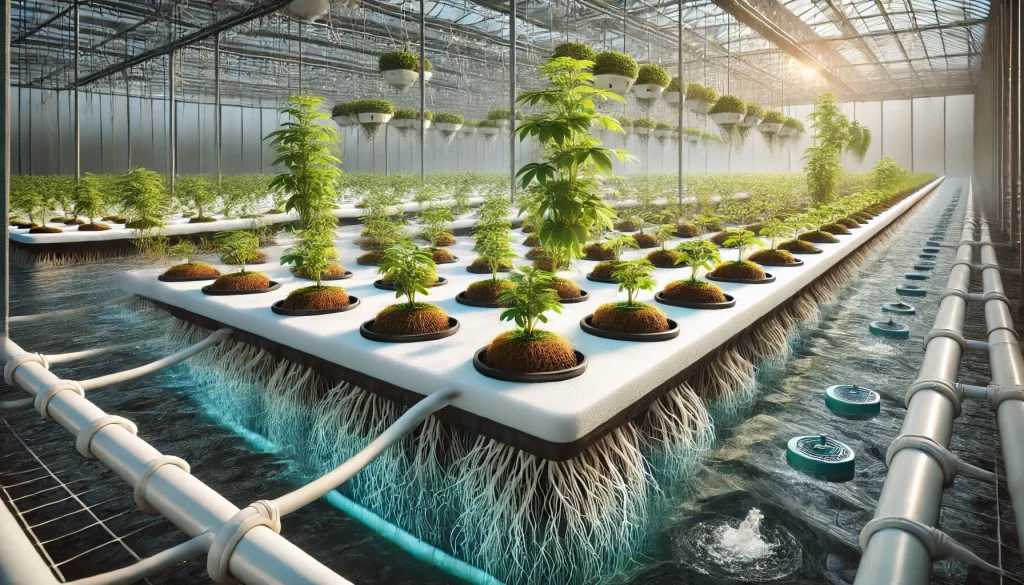
- Wick System: Uses wicks that absorb the nutrient solution and transport it to the roots. It is a passive system, suitable for small or indoor plants.
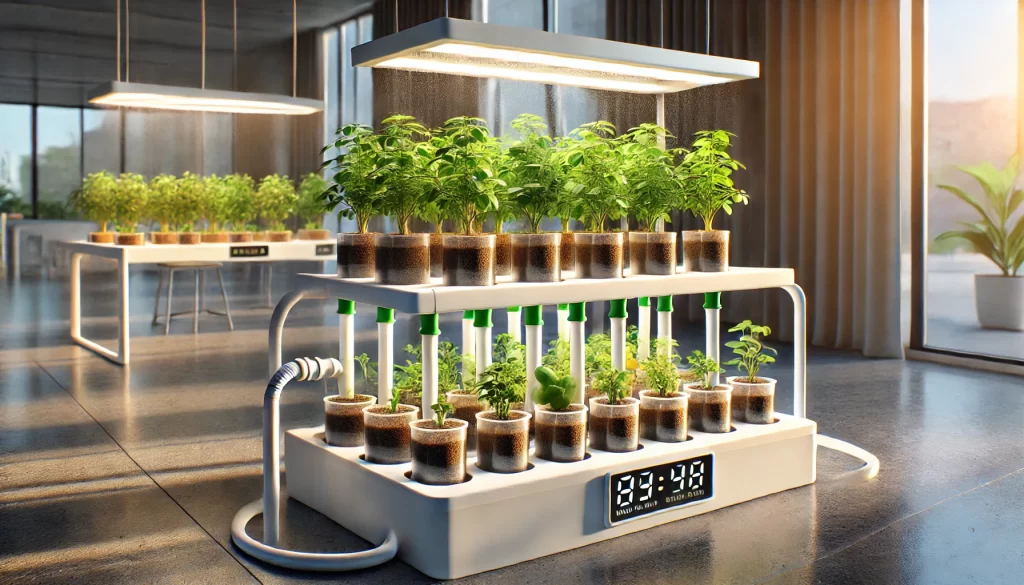
- Drip System: The nutrient solution is dripped directly at the base of each plant, providing precise and controlled feeding. It is widely used for a variety of crops.
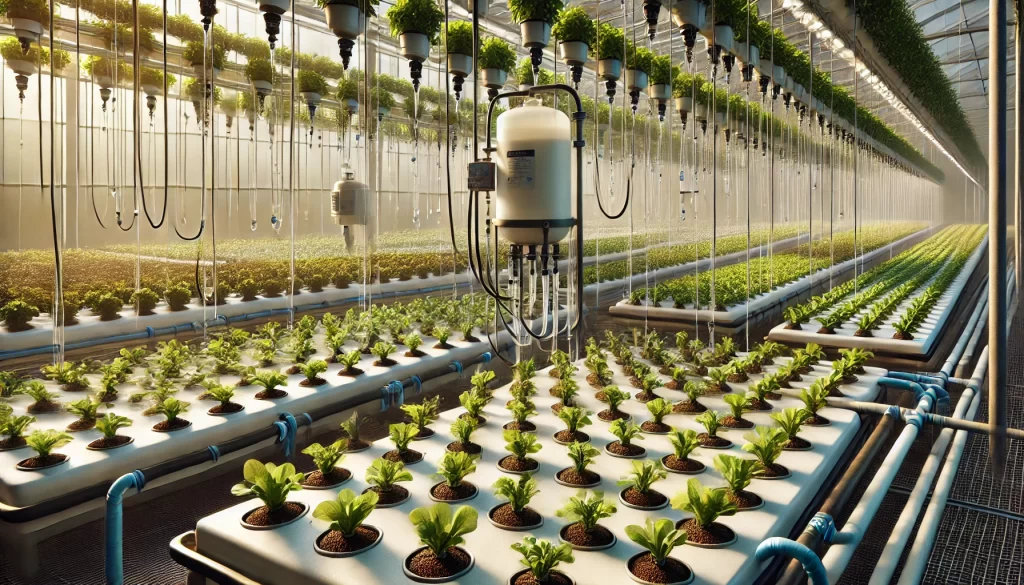
- Aeroponic System: The roots of the plants are suspended in the air and are regularly sprayed with a fine mist of nutrient solution. This system maximizes root oxygenation and is highly water-efficient.
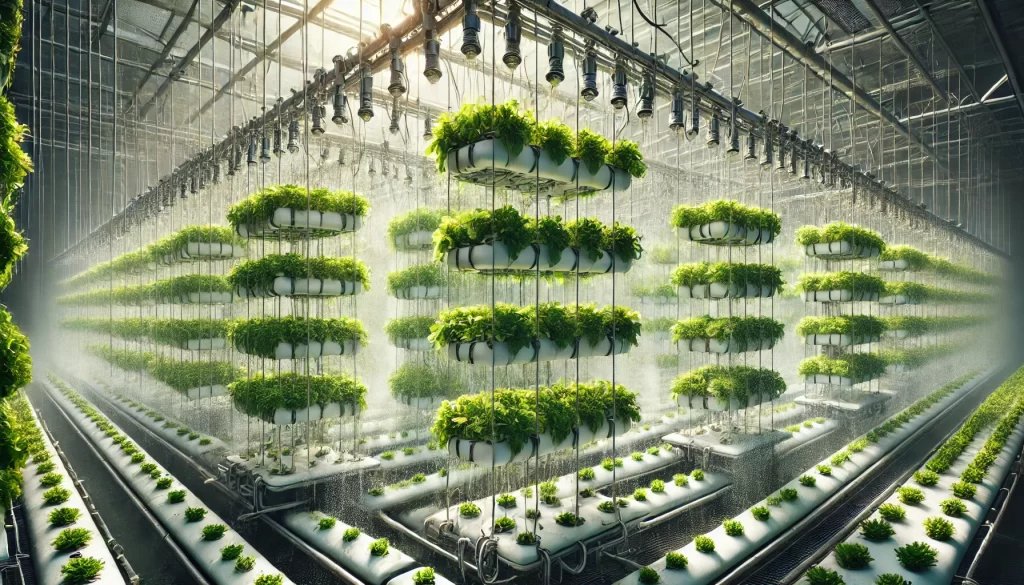
Advantages of Hydroponics
Water Use Efficiency
Hydroponics can use up to 90% less water than traditional farming because the water in the system is recycled and reused. This is especially beneficial in areas with water scarcity or in arid climates.
Greater Control Over Growing Conditions
Hydroponics allows precise control over the growing environment, including nutrient levels, pH, and temperature. This results in healthier plants and faster growth, leading to higher yields per unit area.
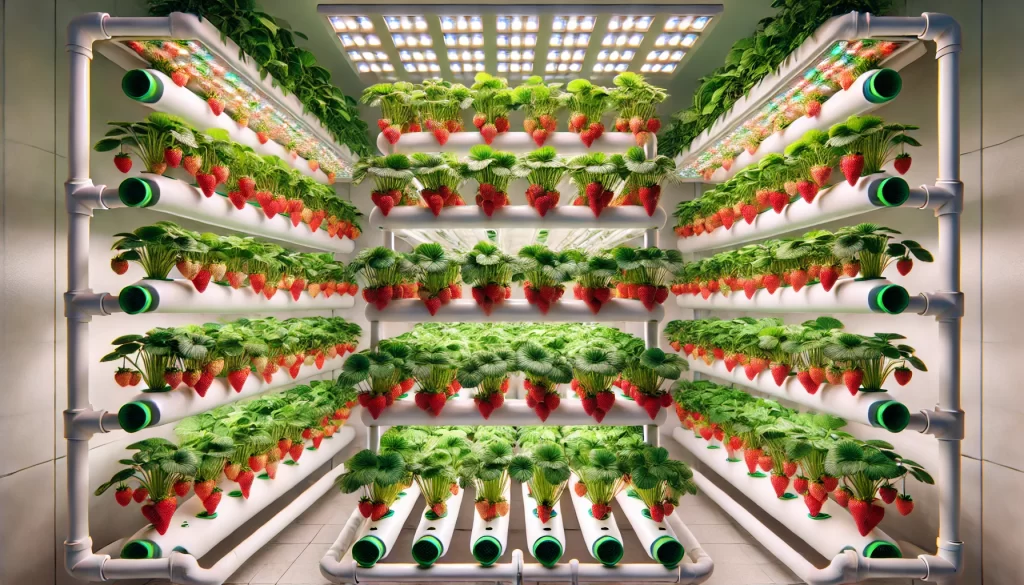
Cultivation in Reduced Spaces
Since hydroponics does not rely on soil, it can be practiced almost anywhere, including indoors, rooftops, and urban areas. This makes agriculture possible in areas where the soil is not suitable for cultivation.
Reduction of Diseases and Pests
By eliminating the soil, the incidence of diseases and pests normally found in the soil is significantly reduced, decreasing the need for pesticides and other chemicals.
Year-Round Production
With a controlled environment, hydroponics allows for year-round production, regardless of the seasons. This is especially valuable for ensuring a constant supply of fresh products in climates where outdoor crops are only viable during certain seasons.
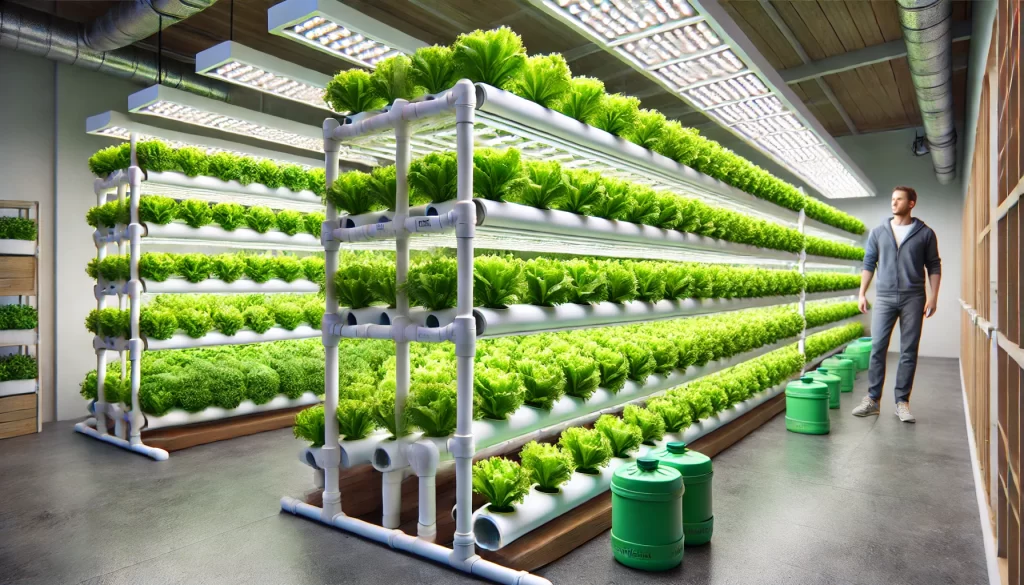
Challenges and Considerations
Technical Requirements
Although hydroponics offers many advantages, it also requires greater technical knowledge and an initial investment in infrastructure, such as irrigation systems, pumps, and nutrient solutions.
Monitoring and Maintenance
The success of a hydroponic system depends on constant monitoring of nutrient levels, pH, and the overall health of the plants. Any failure in the system can quickly affect the plants due to the lack of buffering that the soil provides in traditional farming.
Initial Costs
Setting up a hydroponic system can be expensive, especially in terms of installation and acquiring specialized equipment. However, the costs can be amortized over time due to efficiency and high yields.
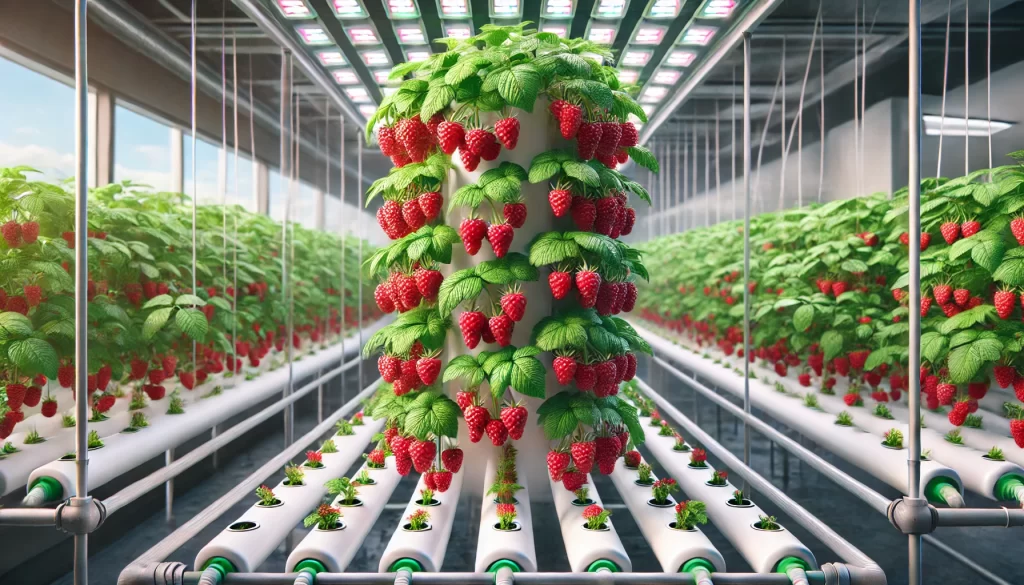
Energy Dependency
Many hydroponic systems rely on pumps and artificial lights, which means a higher dependency on energy. In the event of a power failure, the entire system could be at risk.
Applications of Hydroponics
Food Production in Urban Environments
Hydroponics is an ideal solution for urban farming, allowing fresh food to be produced close to consumption centers. This reduces transportation costs and environmental impact, while providing communities with access to fresh, high-quality products.
High-Value Crops
Hydroponics is especially suitable for growing high-value plants such as herbs, exotic flowers, and organic vegetables. This allows farmers to achieve higher income per square meter compared to traditional farming.
Crops That Can Be Grown with Hydroponics
Here is a list of crops that can be grown with hydroponics:
- Lettuce (Lactuca sativa)
- Spinach (Spinacia oleracea)
- Strawberries (Fragaria × ananassa)
- Tomato (Solanum lycopersicum)
- Peppers (Capsicum annuum)
- Cucumber (Cucumis sativus)
- Basil (Ocimum basilicum)
- Mint (Mentha spp.)
- Cilantro (Coriandrum sativum)
- Parsley (Petroselinum crispum)
- Strawberries (Fragaria × ananassa)
- Broccoli (Brassica oleracea var. italica)
- Kale (Brassica oleracea var. sabellica)
- Swiss Chard (Beta vulgaris subsp. vulgaris)
- Green Beans (Phaseolus vulgaris)
- Eggplant (Solanum melongena)
- Celery (Apium graveolens)
- Arugula (Eruca vesicaria)
- Onion (Allium cepa)
- Strawberries (Fragaria × ananassa)
These crops are well-suited for hydroponic systems due to their rapid growth, ease of management, and high demand in the market.
Agricultural Research
Due to its ability to control growth variables, hydroponics is widely used in agricultural research, allowing scientists to study the effects of different nutrients and growing conditions on plants.
 AgronoBlog – Agriculture Blog
AgronoBlog – Agriculture Blog